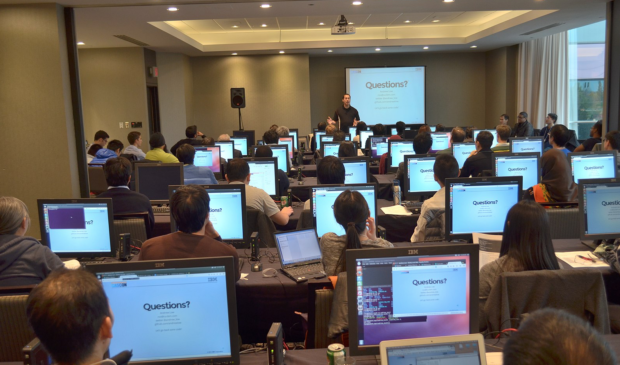Demand for skilled workers drives District 1 jobs training program
Wednesday, August 17, 2022 by
Chad Swiatecki With job growth in Austin stronger than ever, and most analysts naming the region as one of the best job markets in the nation, Workforce Solutions Capital Area is trying to make traditionally underserved communities aware of the job training and employment opportunities available to those looking for a career change.
The organization will spread the word about its recently launched Hire Local plan with a community engagement session at Greater Mt. Zion Church this Saturday, Aug. 20. East Austin’s District 1 was selected to reach more people of color, whose communities have a disproportionately large population with lower education, correlating to more recipients of unemployment benefits.
The event will offer information on training programs and other assistance available, with special attention paid to the group’s four focus areas of information technology, health care, advanced manufacturing and skilled trades.
With major employers such as Samsung signaling that they plan to invest hundreds of billions of dollars in new fabrication and other facilities locally, the demand for properly trained workers will continue to grow, said Yael Lawson, chief operations officer of Workforce Solutions.
Lawson said while job growth offers opportunity, it will also put increasing pressure on residents to earn more so they can afford to continue living in Austin or nearby communities.
“It worries me that we don’t have the population with the skills needed to work in that field, and it’s more important than ever to get the word out about the upskilling opportunities and what’s out there in terms of employment to be able to make a livable wage in Austin,” she said. “With all of these companies coming in, it is becoming more difficult to afford to live in Austin.”
Lawson said local job growth from 2016 to 2021 was more than 13 percent, nearly double the national growth rate. And while the organization sees job growth remaining strong in its main four areas, construction and other needs related to Project Connect will make transit an area of growing importance in the coming years, she noted.
Workforce Solutions’ funding comes from a variety of sources, including contracts with the city and Travis County, with the city stepping in recently to protect child care programs for working parents threatened by the loss of state or federal funding.
With Samsung and other employers seeing a critical need for new hires who are certified production technicians, Lawson said it’s not unusual for companies to help sponsor and design training programs, resulting in an entire class being hired immediately after completing a monthlong course.
“Clearly Austin is booming, and with that we don’t have the skilled workforce and have more jobs than there are people to fill them. Right now our focus is on getting people information about the jobs that are available now. The economy is booming and we definitely need more people, and we’re getting into high schools to talk to kids about opportunities and training for what’s out there.”
Workforce development is also a priority for the city’s Economic Prosperity Commission, which advises City Council on matters relating to economic development. Chair Nathan Ryan said needs related to reproductive health care were at the top of the commission’s recently completed list of priorities for the next fiscal year, with job training issues taking up five of the 10 highest focus areas.
Ryan and other commissioners want to see the city as involved as possible in efforts to support workforce development and making people aware of the opportunities available to them.
“There are lots of folks in town either being let go from jobs in traditional industries or being price-gouged by working in industries where the pay is not good enough for them to continue to afford our rising cost of living,” he said. What’s needed is a “more aggressive investment in workforce development programs” that are designed to reach the people who would benefit the most from learning critical new job skills. Then, he said, people can “move into a sector that would allow them to continue living in Austin.”
Photo made available through a Creative Commons license.
The Austin Monitor’s work is made possible by donations from the community. Though our reporting covers donors from time to time, we are careful to keep business and editorial efforts separate while maintaining transparency. A complete list of donors is available here, and our code of ethics is explained here.
You're a community leader
And we’re honored you look to us for serious, in-depth news. You know a strong community needs local and dedicated watchdog reporting. We’re here for you and that won’t change. Now will you take the powerful next step and support our nonprofit news organization?











